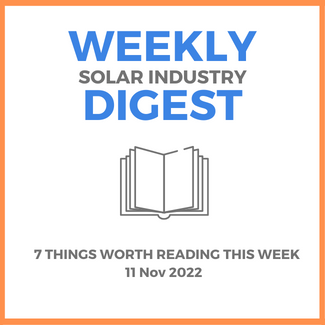BayWa r.e. has been delving more and more into the cost-effective area of agrivoltaics. They’ve been deploying plant-based agrivoltaic experiments and O&M via livestock like sheep. Apparently, sheep grazing in particular is very cost-effective given that it lowers the probability of damage to the modules from kicked-up debris from mowers and is simply cheaper.
Research shows that U.S. solar modules are 107% more expensive without global supply chains. From 2008 to 2020, the globalization of module manufacturing saved $67 billion for U.S., German, and Chinese installers, though it was dominated by Chinese investment. The US saved $19 to $30 billion on solar module pricing due to “the free flow of capital, talent, and innovation.”
SEIA has filed responses to the Treasury Dept’s request for public comments on the clean energy tax provisions of the IRA. They are asking for clarity on domestic content specifications and whether companies can apply existing “Buy America” domestic content regulations to solar and storage facilities. SEIA also seeks a fair and open application process for the LMI community allocated tax credits and easy to understand prevailing wage rates.
PV Magazine digs into the impending CA NEM 3.0. They discuss the claims by utilities that rich Californians reap the benefits of rooftop solar while poorer Californians bear the brunt of NEM costs, pointing out that new CA policies and 16 state-level studies have disproven their cost-shift argument.
Inaccuracies in data are tripping up the solar industry – design and cost inaccuracies and incorrect forecasts. This SPW article makes the case for better standardization of data to create a more trustworthy industry. The author discusses the need for modern data-gathering tools to create independent data sets that ensure more accurate roof measurements, shading analysis, and prediction tools.
After an overview about Energy Toolbase, Kerim Baran of SolarAcademy and Adam Gerza of Energy Toolbase do a very detailed dig into the economics of residential battery / storage in southern California using the Energy Toolbase platform and development features. Their discussion touches on the impact of the standalone storage ITC and the impending NEM 3. The video is below.
As part of the Greentech Renewables Webinar Training Series, Generac lays out how to integrate with their AC coupled solution. Topics include why you should consider selling AC coupled PWRCell; a review of their available marketing and launch materials; and system requirements, configuration, commissioning procedure, and frequency modulations. The video is below.


